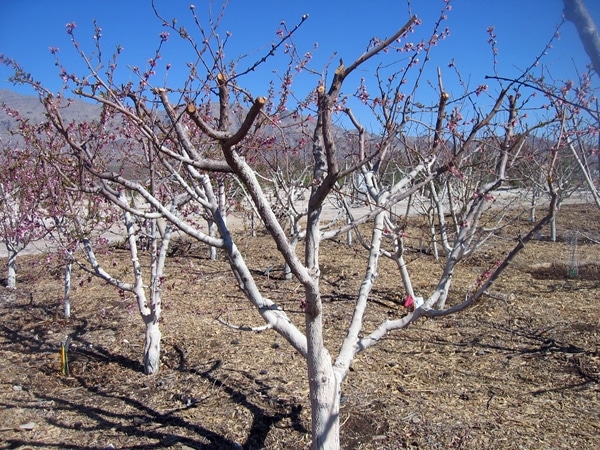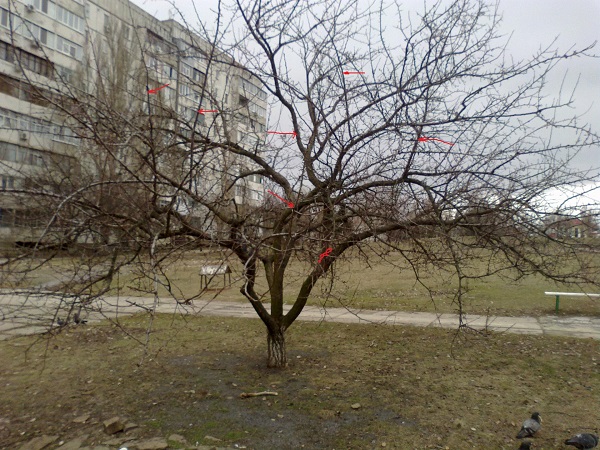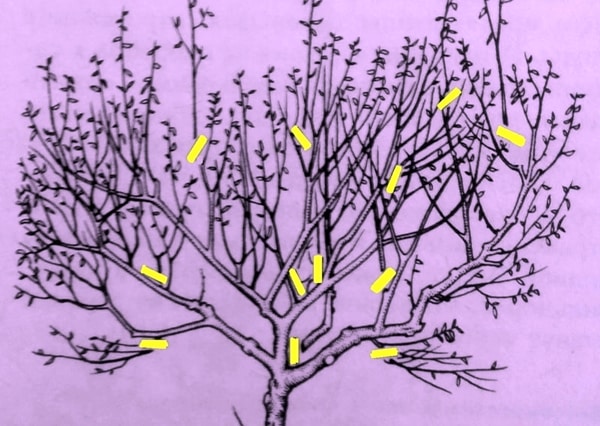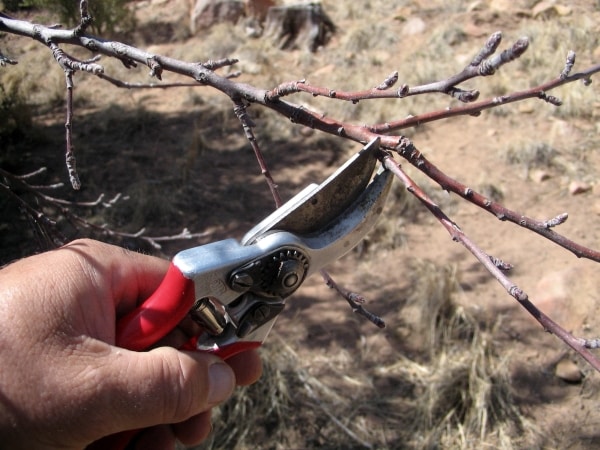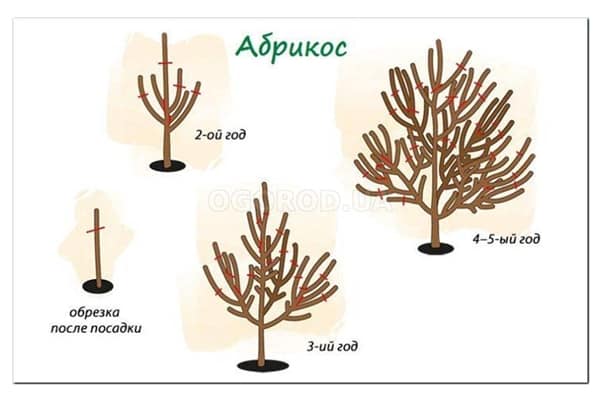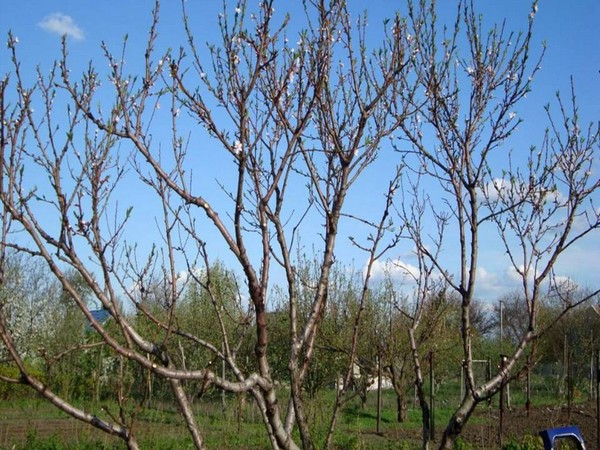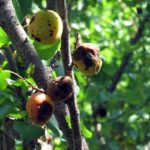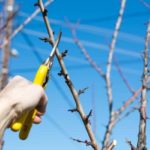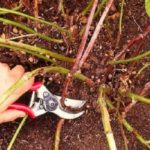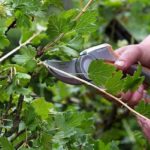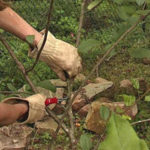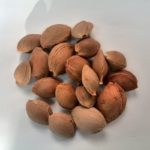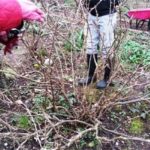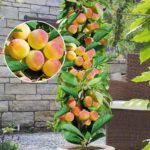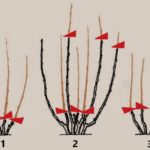Trees that recently grew only in the south are now cultivated by gardeners in mid-latitudes. Apricots branch heavily, thick branches develop quickly, which leads to a thickening of the crown. The fruits become smaller, which affects the yield. Caring for stone fruit crops consists not only of watering and fertilizing; apricots should be pruned regularly, which helps rejuvenate the tree, prevents shoots from growing, and prevents branches from breaking under the weight of the fruit.
- Choosing tools for working with apricots
- Timing for tree pruning
- Spring
- Summer
- Autumn
- Changing the timing of pruning depending on the growing region
- Varieties of forms
- Rules for crown formation
- young tree
- At 2 years old
- 3 years
- 4–5 years
- 6–7 years
- Features of anti-aging pruning
- Necessary care after cutting branches
- Errors during the pruning procedure
Choosing tools for working with apricots
To shape the crown and shorten the shoots, you need to stock up on equipment. You need to purchase pruning shears, a grafting knife, a garden saw, and a file. You definitely need to have a whetstone on hand, which you have to use to sharpen tools quite often. Apricot wood is tough and strong, so the equipment quickly becomes dull. The pruning shears are adjusted using a nut that can be tightened and released.
Before cutting, the teeth of the saw are spread apart so that the sharp side points them inward. Before starting work, the tool is disinfected with an antiseptic so that germs from the diseased branch do not get onto the healthy plant. Rust on the saw and knife is smeared with garden paste, which is cleaned off with a sharpening stone before work.
Timing for tree pruning
Dried apricot shoots can be removed at any time. The shortening of the shoots and the formation of the crown is carried out before the buds begin to open. All gardening work is carried out in spring and autumn and is completed when the sap flows. Pruning is carried out not only to rejuvenate the apricot and form the crown, but also to remove dead shoots.
A heat-loving crop does not always tolerate cold winters well. To stimulate the growth of young branches, pruning begins in the summer.
Spring
When the apricot bark changes color and the juice begins to flow, summer residents who have rested during the winter will have a lot of work, because the time has come to carry out pruning: both rejuvenating and sanitary. Using a sharp instrument, they remove the shoots that grow inside the trunk, clean the crown, being sure to follow the slope so that the cuts lead to the bud.Dry, frozen branches are removed, which take away the strength of healthy shoots.
It is necessary to form a crown on a fruit-bearing tree until a cone of green leaves has formed. The flowering period is not suitable for pruning.
Summer
Apricots do not shed excess ovary; a lot of fruit remains, which is why the branches break. In a couple of years, small and large skeletal shoots form on one tree. In summer, 2 prunings are carried out. In June they begin minting, which promotes the rapid growth of leaves:
- Strong annual branches longer than 30 cm are shortened by half, weak ones by 1/3.
- After 14–16 days, the strongest new shoots are left.
- The tree is formed into several tiers, directing the crown to the desired position.
This rejuvenating pruning is not performed every year, but at least every 3 years. Buds form on young shoots, which helps to increase fruiting in the next season.
When performing the procedure in August, the leaves do not have time to grow. After pruning, apricots must be watered because they require a lot of water. If the weather is dry, irrigation is impossible, it is not recommended to shorten the shoots, the plant can get sick.
Autumn
After harvesting, pruning is done to remove damaged and dry branches. By freeing the apricot from weak shoots, it is helped to survive the winter, accumulate strength for the next year, and form new shoots.
In mid-October, 3 types of pruning begin:
- sanitary;
- regulatory;
- rejuvenating.
However, the procedure does not apply to late varieties of apricots. Long branches are shortened by half a meter and the main shoots are pinched.
Changing the timing of pruning depending on the growing region
The climate of the southern regions differs significantly from the weather conditions in the central regions.Although breeders have developed varieties of apricots that take root and bear fruit in the middle zone, the timing of pruning is slightly different.
In the Krasnodar Territory and the North Caucasus, shoots on trees are shortened already in February and March, while in the Kursk Region they begin work in the garden in early April.
In the southern regions, autumn pruning continues in November, in mid-latitudes it is completed before October 15, otherwise the apricot may freeze in winter.
Varieties of forms
Young shoots on fruit trees bear fruit abundantly for 3 years. In spring, a mass of ovaries appear on them, but after a short period the yield decreases, but new branches grow to replace them. Experienced gardeners know how to give apricots a decorative appearance. The cypress form helps the owner of a small plot to save space for planting other crops. The crown of the tree is compact and not spreading.
Apricot, which is formed in the form of a palmette, grows as a bush and looks very beautiful; picking the fruits from it is a pleasure. This pruning scheme is quite complicated; not every gardener will be able to master the process.
The easiest way is to give the tree the appearance of a ball. The shoots are shortened in the third year after planting.
For tall apricots, the sparse-tiered form is more suitable, because it prevents growth. In regions where winters are cold and there is a lot of snow, the shale form predominates. Low trees make them look like a bowl:
- 4 years after planting, 3 strong branches are selected from the apricot, the rest are shortened to stumps.
- Subsequently, the shoots are equalized so that they have the same length.
- On skeletal-type branches, 2 more smaller ones are formed, leaving no more than half a meter between them.
Regulatory pruning is done to remove suckers that grow inside the trunk. The procedure helps improve lighting.
Rules for crown formation
Despite the fact that apricots may look like an ornamental shrub, cypress or palmette, the crown of all these fruit trees does not thicken, but turns out to be sparse due to the fact that it is formed year by year before fruiting begins. First, the correct pruning is performed, and then the branches are only removed and shortened so that the fruit crop is well illuminated by the sun's rays.
young tree
After planting apricots in open ground until next spring, a central, rather strong shoot grows. In the fall, before the cold weather sets in, it is shortened by ¼ of the length.
At 2 years old
The tree continues to develop. A two-year-old apricot already has 3 lateral branches, each of which is slightly pruned during the warm period. This procedure helps the young plant not to die in severe frosts and even grow stronger by spring.
3 years
You need to wait exactly that long for the apricot to grow a large number of branches. They form a crown in the form of a ball. After 3 years, the old shoots are disposed of, since during this period their fruiting deteriorates. Although the ovary will appear on the tree, there will be less fruit.
4–5 years
At this age, the apricot develops new branches on the main branches. They are subject to pruning. The shoots are shortened by 15 cm. The distance between the shoots is increased by 10 centimeters every year. On the central trunk, long branches are reduced by half, short ones are left untouched.
6–7 years
By this age, the crown of the tree should have formed. Regulatory pruning is sufficient for mature apricots. It is carried out so that the tree does not thicken, is well lit by the sun and delights with fruit.
Fruiting buds are formed at a height of 30 cm from the top of young shoots. After 3 years they do not produce a harvest; there is a need to form new bouquet branches.
Features of anti-aging pruning
With improper care and in old trees, shoots stop growing, but apricots recover well. There are several methods of anti-aging pruning, which helps to prolong fruiting.
In the first option, the branches that extend from the skeletal ones are shortened to the base. This promotes the appearance of a large number of new shoots. Almost all of them are removed, and those that grow horizontally or are located at an angle of 45° are left.
In the second option, the skeletal branches are exposed and cut to approximately half their length. This helps rejuvenate the apricot.
With the 3rd method, the main shoots are completely removed, but first they are shortened from the trunk by 30 centimeters. When new shoots emerge from the buds, one is selected, which is left as a skeletal branch. You cannot trim several thick shoots at the same time, otherwise the apricot may get sick. If the process is successful, only after 3 years is another shoot replaced.
Necessary care after cutting branches
When forming the crown and shortening the shoots, the tree must be carefully looked after. Having completed the procedure, proceed to other important work:
- The cut areas are covered with garden varnish with a layer of at least 0.5 cm.
- Extensive wounds are disinfected with copper sulfate.
- In order for the apricot to take root faster, fertilizers containing phosphorus and nitrogen are applied to the tree trunk.
If the cuttings are not treated, microbes appear and the plant gets sick. You can make your own putty from fir resin.In a metal bowl, 100 g of this substance is mixed with 10 grams of wax and heated until the mass melts. When it cools down, pour in a spoonful of warm alcohol.
Var, which quickly hardens and seals cuts well, can be prepared from other components. Over low heat you need to melt 400 g of rosin, 200 beeswax and 110 fat. When the mixture is heated, pour a glass of linseed oil, mix and place in cold water.
Errors during the pruning procedure
Although apricot is considered an unpretentious plant, and breeders have created many hybrid varieties, in order for the tree to be pleased with the harvest of large fruits, it needs to be watered, fed, and the crown not allowed to thicken. Even a small mistake can cause huge harm:
- When cutting shoots with a blunt saw, burrs form on the bark, into which microbes are directed, and the branch begins to rot.
- When the procedure is performed in late autumn, when the temperature drops significantly, the wounds no longer heal, and the apricot often dies in severe frosts.
- Failure to process cuts or use of undisinfected instruments can lead to infection of the tree.
You cannot leave branches that extend from the trunk at an angle of 30°; apricots do not shed their ovaries, and heavy fruits break them off. In mid-latitudes, pruning is not recommended in the fall; trees may not survive.
During the procedure, some gardeners do not adhere to the rules, but they must be followed:
- All branches that go down are removed.
- Shoots older than 5 years are cut at an angle of 45°.
- The crown must be freed from processes directed towards the middle.
- Drooping branches are shortened to the point where branching begins.
The trunk length is left at a height of 2 meters.It is possible to completely rejuvenate an apricot only after 3 years, otherwise the likelihood of its death is high.
Beginner gardeners sometimes do not know that shoots need to be cut off near the buds and not leave stumps. They harbor microbes that cause serious illness.
To shorten thick branches, you need to use a saw, but such a tool is not suitable for thin branches; pruning shears are designed for this. The cut areas must be cleaned with a sharp knife.
If the crown is very thick, you need to remove shoots that grow from the inside or are directed downward.
On mature apricots, old branches must be thinned out and diseased ones must be cut off, but some gardeners first shorten not weak shoots, but those that are positioned incorrectly.
Gross mistakes include treating cuts with manure that has not had time to rot, or with chemical paint. Such substances cause wood burns, and these wounds do not heal for a long time.

